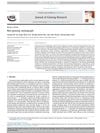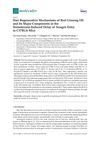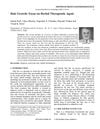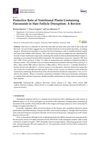Physiological and Pharmacological Features of the Non-Saponin Components in Korean Red Ginseng
February 2020
in “
Journal of Ginseng Research
”
Korean Red Ginseng non-saponin components polysaccharides peptides alkaloids polyacetylene phenolic compounds essential oils acidic polysaccharides amino acids arginine nucleic acids antioxidant hepatoprotective anti-inflammatory hair growth-promoting Korean Red Ginseng Oil linoleic acid phytosterols KRG ginseng oil
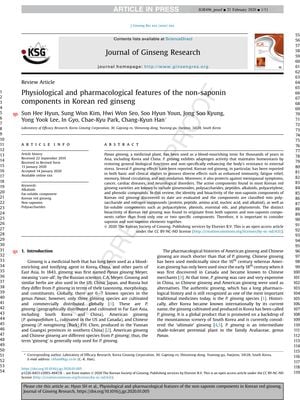
TLDR Korean Red Ginseng has beneficial components that help with stress, immunity, fatigue, memory, blood flow, and disease protection.
The document from July 1, 2020, reviews the non-saponin components of Korean Red Ginseng (KRG) and their physiological and pharmacological activities. It emphasizes the adaptogenic properties of KRG, which help the body resist stress and maintain homeostasis, and its effects on immunity, fatigue, memory, blood circulation, and protection against various diseases. The non-saponin components, including polysaccharides, peptides, alkaloids, polyacetylene, phenolic compounds, and essential oils, contribute significantly to KRG's bioactivity. The review details the immune-enhancing properties of acidic polysaccharides, the abundance of amino acids like arginine, the presence of nucleic acids, and the physiological activities of alkaloids, polyacetylenes, and phenolic compounds. It also notes the antioxidant, hepatoprotective, anti-inflammatory, and hair growth-promoting effects of Korean Red Ginseng Oil, which is rich in linoleic acid and phytosterols. The document calls for more research into these non-saponin components and standardized analysis methods to fully understand KRG's efficacy.
